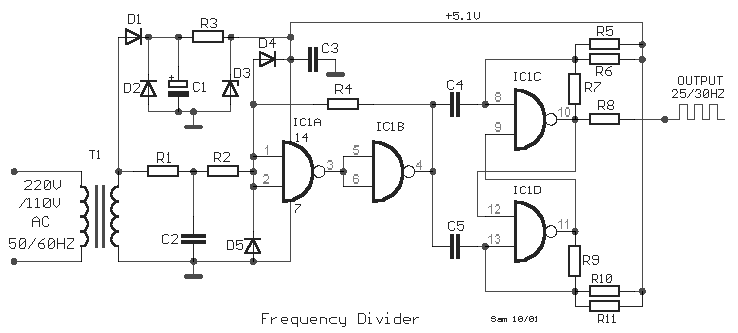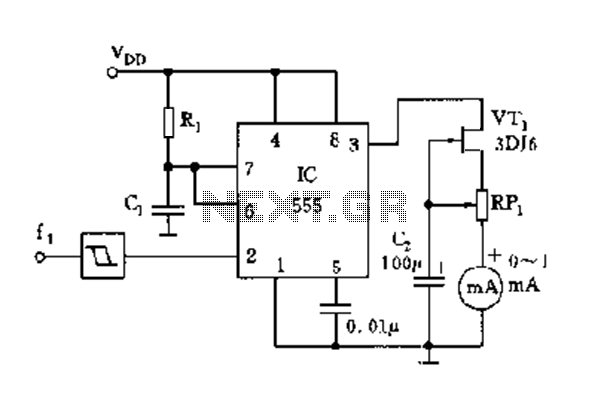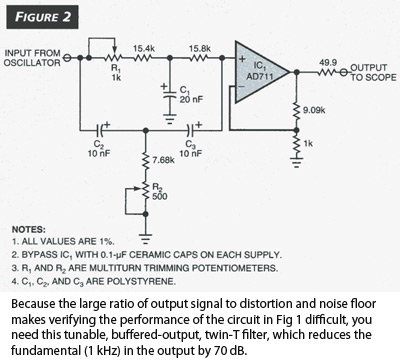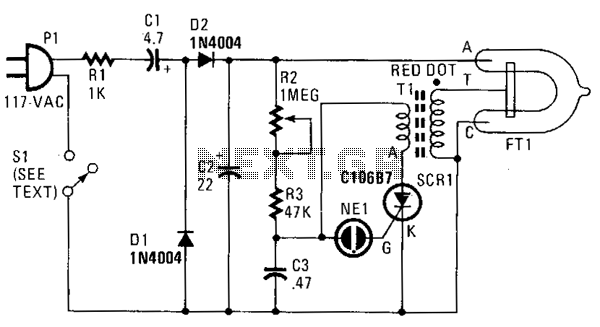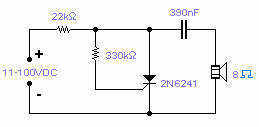
Variable Frequency And Duty Cycle Oscillator
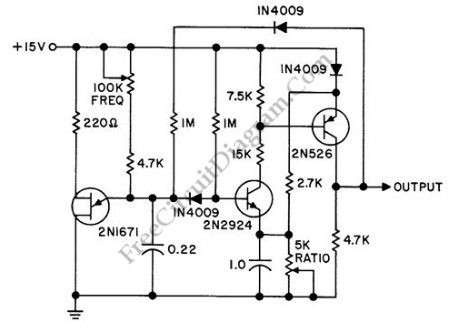
A discrete oscillator circuit illustrated in the schematic diagram below is a variable duty cycle and variable frequency oscillator, which can be utilized to generate various output waveforms.
The discrete oscillator circuit is designed to produce oscillations with adjustable frequency and duty cycle, making it versatile for various applications. The core of the circuit typically includes components such as resistors, capacitors, and transistors or operational amplifiers configured to create feedback loops that sustain oscillation.
The frequency of oscillation can be altered by varying the values of the resistors and capacitors in the timing network. For instance, increasing the capacitance or resistance will generally lower the frequency, while decreasing these values will raise the frequency. The duty cycle, which defines the proportion of one cycle in which the output is active, can also be adjusted by modifying the charge and discharge paths of the timing capacitor.
In practical applications, this type of oscillator can be used in signal generation for audio applications, clock pulses for digital circuits, or modulation signals in communication systems. The output waveform can be a square wave, triangle wave, or sawtooth wave, depending on the specific configuration of the circuit components and the desired application.
To ensure stability and performance, it is crucial to select components with appropriate tolerances and characteristics, especially in high-frequency applications where parasitic capacitance and inductance can significantly affect circuit behavior. Additionally, power supply decoupling may be necessary to maintain consistent performance under varying load conditions.
Overall, the discrete oscillator circuit offers a flexible solution for generating variable frequency and duty cycle signals suitable for a wide range of electronic applications.A discrete oscillator circuit shown in the schematic diagram below is? a variable duty cycle and variable frequency oscillator, can be used to produce. 🔗 External reference
The discrete oscillator circuit is designed to produce oscillations with adjustable frequency and duty cycle, making it versatile for various applications. The core of the circuit typically includes components such as resistors, capacitors, and transistors or operational amplifiers configured to create feedback loops that sustain oscillation.
The frequency of oscillation can be altered by varying the values of the resistors and capacitors in the timing network. For instance, increasing the capacitance or resistance will generally lower the frequency, while decreasing these values will raise the frequency. The duty cycle, which defines the proportion of one cycle in which the output is active, can also be adjusted by modifying the charge and discharge paths of the timing capacitor.
In practical applications, this type of oscillator can be used in signal generation for audio applications, clock pulses for digital circuits, or modulation signals in communication systems. The output waveform can be a square wave, triangle wave, or sawtooth wave, depending on the specific configuration of the circuit components and the desired application.
To ensure stability and performance, it is crucial to select components with appropriate tolerances and characteristics, especially in high-frequency applications where parasitic capacitance and inductance can significantly affect circuit behavior. Additionally, power supply decoupling may be necessary to maintain consistent performance under varying load conditions.
Overall, the discrete oscillator circuit offers a flexible solution for generating variable frequency and duty cycle signals suitable for a wide range of electronic applications.A discrete oscillator circuit shown in the schematic diagram below is? a variable duty cycle and variable frequency oscillator, can be used to produce. 🔗 External reference
